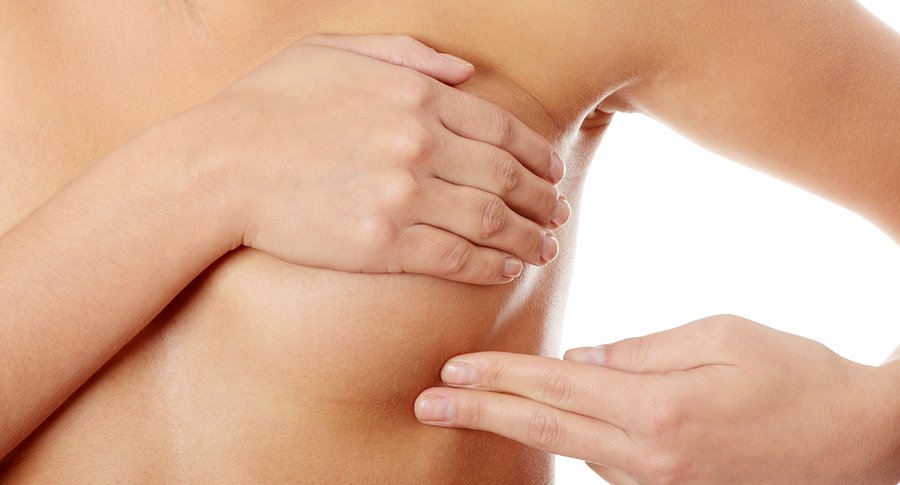Women are notoriously critical of their own bodies, finding imperfections in many features. A lady who looks beautiful to others may feel that her nose is too large, her hips are too wide, or her stomach has an unattractive pouf. And one of the areas that elicits a particularly high level of dissatisfaction is often a women’s breasts. It seems few of us like the size and shape we naturally matured into—hence the vast popularity of augmentation and reduction surgeries, which some people might consider disturbing. But equally disturbing is new research that suggests women who aren’t happy with their breasts might not be willing to perform even the simplest of routine checks on them.
The study, which was conducted at Anglia Ruskin University in the United Kingdom, found that women who do not care for the appearance of their breasts are less likely to do monthly self-examinations to note whether anything feels different.1 Swami, Viren and Furnham, Adrian. “Breast size dissatisfaction, but not body dissatisfaction, is associated with breast self-examination frequency and breast change detection in British women.” Body Image. March 2018. Accessed 4 February 2018. http://www.sciencedirect.com/science/article/pii/S1740144517304734. These exams are supposed to be performed in front of a mirror and involve feeling your way around each breast in a circular pattern to detect any sort of new lump or abnormality at an early stage.
These results are based on an investigation of 384 British women who were asked questions about how they view their breasts and their bodies, their self-examination frequency, and confidence in their ability to detect a change. Sadly, the vast majority of subjects didn’t like something about the size of their breasts. Smaller breasts were desired by 31 percent of the participants, and another 44 percent said they would prefer to have larger breasts.
Among all of the women, 33 percent reported rarely or never engaging in self-examinations of their breasts. Perhaps even worse, eight percent of the women admitted that they would put off going to a doctor to have anything they discovered checked out, and two percent said they would ignore any changes they found entirely. The important point, though, is that the study found that those women who were dissatisfied with their breast size—either too large or too small—were significantly associated with less frequent self-examinations, lower confidence detecting a change in their breasts, and greater delay in seeing a doctor if a change in their breasts was detected.
While this research is flawed because it relies on a fairly small population sample, its results are not really surprising and might very well be replicated with larger groups and in other countries. That’s because in many parts of the world, especially the United States, the ideals of beauty held up to women from the time they are small children are unrealistic. It was bad enough decades ago to see tall, incredibly skinny models portrayed as the paradigm of perfection, but now with technological advances that have led to programs like Photoshop, the images we are shown are even further from reality. And it’s no longer just an occasional glimpse in a magazine or on television, but a constant barrage on the Internet.
Therefore, it’s hardly shocking that so many women would be dissatisfied with an area of their bodies so distinctly feminine as their breasts. But, particularly when it comes to a matter of health, we need to move past this. Although the value of self-examinations is still being debated, it’s hard to dispute findings such as those of a 2011 study at the University of Washington School of Medicine in Seattle which showed that 25 percent of breast cancers were detected through self-exams.2 Roth, Mara Y.; et al. “Self-Detection Remains a Key Method of Breast Cancer Detection for U.S. Women.” Journal of Women’s Health. August 2011. Accessed 5 February 2018. http://www.ncbi.nlm.nih.gov/pmc/articles/PMC3153870/
Getting to know your body well and being able to distinguish any changes can only benefit you. The time between annual checkups—which, let’s face it, is a schedule most women don’t follow—can be very long if abnormal cells start growing shortly after your last exam. And in the U.S., breast cancer occurs in approximately one in eight women, making it the most common form of the disease in women.
Ultimately, we all need to focus on the strength and health of our bodies rather than finding flaws. When you make a commitment to take care of yourself by eating more nutritiously and exercising regularly, you are doing such a positive thing that you will start to see your body in a new light over time. But even if you’re not there yet, it’s essential to respect your body through small efforts like self-exams, which can help catch issues early. Even if you choose to follow a non-medical protocol in dealing with the issue, starting earlier is better. Your health is well worth the few minutes it might take each month.
References
| ↑1 | Swami, Viren and Furnham, Adrian. “Breast size dissatisfaction, but not body dissatisfaction, is associated with breast self-examination frequency and breast change detection in British women.” Body Image. March 2018. Accessed 4 February 2018. http://www.sciencedirect.com/science/article/pii/S1740144517304734. |
|---|---|
| ↑2 | Roth, Mara Y.; et al. “Self-Detection Remains a Key Method of Breast Cancer Detection for U.S. Women.” Journal of Women’s Health. August 2011. Accessed 5 February 2018. http://www.ncbi.nlm.nih.gov/pmc/articles/PMC3153870/ |











